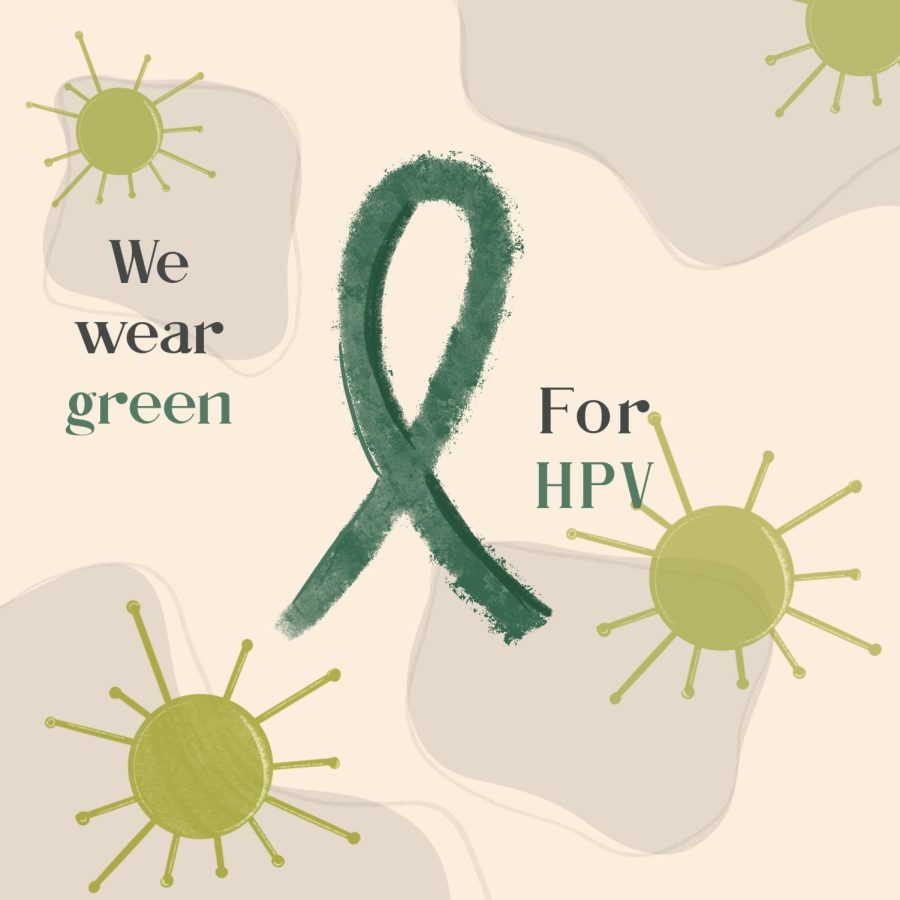Protection over politics
November 22, 2022
If there was a vaccine for cancer, would you vaccinate your child? Did you know that nine out of 10 cervical cancers are caused by a vaccine-preventable sexually transmitted infection (STI)?
The human papillomavirus (HPV) is the most common sexually transmitted infection in the United States, with 43 million recorded cases in 2018 and nearly 13 million new infections yearly. In fact, nine out of 10 people will have HPV at some point in their lives. Most people who contract HPV do not experience any symptoms; however, an individual who has HPV can still spread the virus even if they do not know that they have it.
In most cases, the infection absolves within a few years. But for higher-risk cases of HPV, the infection can persist for decades before causing health complications or developing into cervical, rectal, oropharyngeal or other cancers. As a result, HPV can be tough to detect before it causes problems, especially since no swab or blood test for the virus currently exists.
There are many ways to protect yourself from STIs like HPV, including practicing abstinence or using a physical barrier during sex such as condoms or dental dams — but even these methods have their faults. While abstaining from sexual activity is the most reliable way to prevent any STI, this plan is not foolproof, especially if the decision to abstain from sex is not made autonomously. Neither are condoms, as the virus can exist in areas outside of what the condom covers. Even safe sex can put you at risk of contracting HPV; however, HPV is unique from other STIs in that it is preventable through vaccination.
Choosing to receive the HPV vaccine is the best way to ensure that you do not become infected with HPV. There are currently three different vaccines for HPV. Gardasil 9, which has been the only HPV vaccine administered in the U.S. since 2016, is extremely effective in preventing up to nine different types of HPV. While there are over 100 different types in total, two of them account for 70% of invasive cervical cancers.
The vaccine is most effective in preventing HPV infections when administered before an infection occurs. Thus, it is only advised for teenagers and young adults under the age of 26. Unfortunately, this is where prevention and public health intervention get tricky. Despite recommendations from the Advisory Committee on Immunization Practices to include the HPV vaccine in childhood immunizations, HPV vaccination rates in the U.S. remain relatively low.
The HPV vaccine is a two-series vaccination, meaning the individual must receive two separate injections for the immune system to generate sufficient antibodies. The series is typically introduced to teens and parents as part of their routine childhood immunizations; however, many parents object to the HPV vaccine as they feel it enables their child to become sexually active without consequences. A study published in the 2018 Journal of Adolescent Health studied the responses of parents who chose to opt their child out of receiving the HPV vaccine from 2010 to 2016 and revealed that safety and lack of necessity were the most common reasons.
Neglecting to vaccinate your child for a cancer-causing virus that infects more than 80% of sexually-active adults because of your own attitudes and beliefs surrounding sex is ignorant and irresponsible. Regardless of how you perceive your teenager and their habits at ages 13 to 17, it is crucial to their health and well-being that they receive both doses of the HPV vaccine before they are sexually active or reach the age of 26. If you are a sexually-active adolescent under the age of 26 who has not previously heard of the HPV series, check with your doctor, local community health clinic or with UTSA Wellness 360 to see if they recommend the HPV vaccine.








